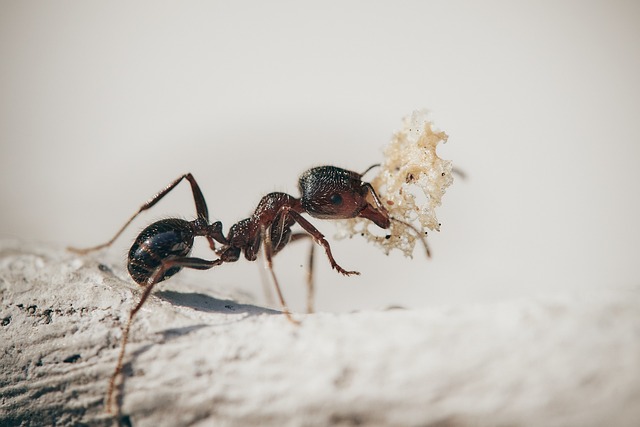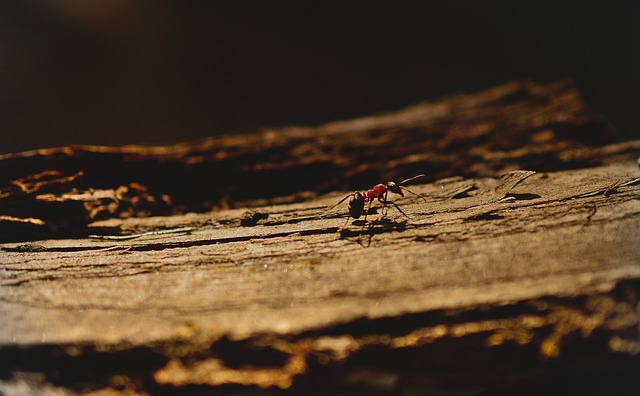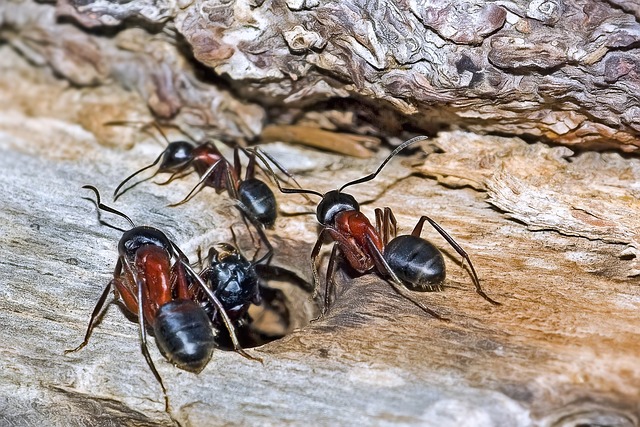When you think of household pests, termites might come to mind as the number one wood destroyers, but carpenter ants deserve just as much attention. These pests can cause extensive damage to the wooden structures in your home or business, leading to costly repairs if you don’t catch them fast.
While they don’t actually eat wood like termites, carpenter ants excavate it to build their nests, creating tunnels that weaken the structural integrity of buildings over time. So, what exactly is carpenter ant damage, and why is it a threat to your property? Let’s break it down!
Understanding Carpenter Ants
Carpenter ants are among the largest ant species, with some workers reaching up to half an inch in length. Typically black, these ants can also showcase striking red or yellowish tones, making them stand out in their environment.

Their preference for nesting in moist or decayed wood makes them a significant threat to homes, especially any with leaky roofs, damp basements, or inadequate drainage systems.
Unlike termites, which munch their way through wood, carpenter ants have a different approach. They create nests by hollowing out wood to construct smooth, tunnel-like galleries. This behavior can lead to severe structural damage, compromising the integrity of beams, joists, and other vital wooden components in your home or business.
The real danger lies in carpenter ants’ stealthy nature. Their nesting habits can go unnoticed for years, silently weakening the framework of your property.
By the time signs of their presence—like wood shavings, frass, or rustling sounds—are noticed, it’s often too late, leading to costly repairs and extensive damage. Vigilance is key: early detection and intervention can save you from a hidden disaster lurking within your walls.
What Does Carpenter Ant Damage Look Like?
Identifying carpenter ant damage can be a real challenge, as it often mimics termite damage at first glance. But here’s the crucial difference: while termites chow down on wood, carpenter ants remove it to carve out their nests. Keep an eye out for these signs to determine if your home is under siege:

- Smooth Tunnels: Carpenter ants create clean, polished tunnels in wood. These galleries are smooth and free of dirt and debris, a clear sign of their activity.
- Piles of Wood Shavings: As they excavate, carpenter ants leave behind a telltale sawdust-like material in their wake. Look for small piles of this stuff near baseboards, windowsills, or attics. Depending on the damage they’ve done, it can range from fine powder to larger clumps.
- Structural Weakness: Over time, their wood removal can seriously compromise the structural integrity of beams, floorboards, and walls. You might notice sagging or creaking floors as red flags that demand immediate attention.
- Live Ants: Spotting large black ants wandering around your home, especially in damp areas, is a strong indicator of a nearby nest. Since carpenter ants are nocturnal, you’ll likely see them in the evening.
- Sounds of Activity: Tune in for rustling or crunching noises emanating from inside your walls or ceilings. These sounds could mean carpenter ants are hard at work within the wood, particularly at night when they’re most active.
While carpenter ants may not cause immediate damage like termites, their long-term impact can be devastating. Left untreated, carpenter ants can hollow out large sections of wood, leading to sagging floors, weakened walls, and even roof collapse. In some cases, the cost of repairing carpenter ant damage can rival that of termite damage, especially if the infestation is widespread.
Preventing Carpenter Ant Damage

Adopting a proactive approach is the best way to safeguard your property from carpenter ant damage. Prevention is critical, and implementing a few simple strategies can significantly minimize the risk of these destructive pests making themselves at home in your space.
Eliminate Moisture
Carpenter ants thrive in damp environments, making moisture control crucial. Fix leaky pipes and ensure proper ventilation in crawl spaces and attics. Pay attention to areas prone to water damage, like basements, and promptly address any leaks or pooling water. Using dehumidifiers can also help maintain a dry atmosphere that discourages these pests.
Seal Entry Points
Carpenter ants are sneaky, and even the smallest openings can allow them access to your home. Seal these areas with caulk or weather stripping to keep carpenter ants and other pests from getting inside.
Remove Decaying Wood
Carpenter ants are particularly drawn to rotting or decayed wood, which provides an ideal nesting environment. Regularly check your property for any dead trees, stumps, or firewood piles, and remove them from around your home’s foundation.
Store Firewood Away From Your Home
If you store firewood, be strategic about its placement. Keep it at least 20 feet away from your home to prevent carpenter ants from finding a path inside. It’s also best to store firewood off the ground using a rack to reduce moisture exposure.
Maintain Outdoor Vegetation
Overgrown vegetation can create a perfect bridge for carpenter ants to access your home. Regularly trim back shrubs, trees, and other plants near your foundation. Make sure branches don’t touch your home, as they can serve as highways for pests to enter.
Remember, a proactive approach is always more cost-effective than dealing with extensive repairs later on. If you suspect a carpenter ant problem or simply want peace of mind, reach out to professionals like Sentinel Pest Control for an inspection and tailored treatment plan. Protecting your property today can save you from headaches tomorrow!
Protect Washington Home with Sentinel Pest Control
Your property is a significant investment, and carpenter ant damage can seriously chip away at its value if left unchecked. That’s where Sentinel Pest Control steps in. We don’t just handle the problem—we eliminate it entirely.
Our skilled team uses cutting-edge methods to track down hidden nests and wipe out the entire colony, ensuring your home or business is fully protected. Plus, our preventative solutions help keep infestations from ever coming back, saving you time, money, and headaches. With Sentinel Pest Control, you’re protecting your property and securing peace of mind.


